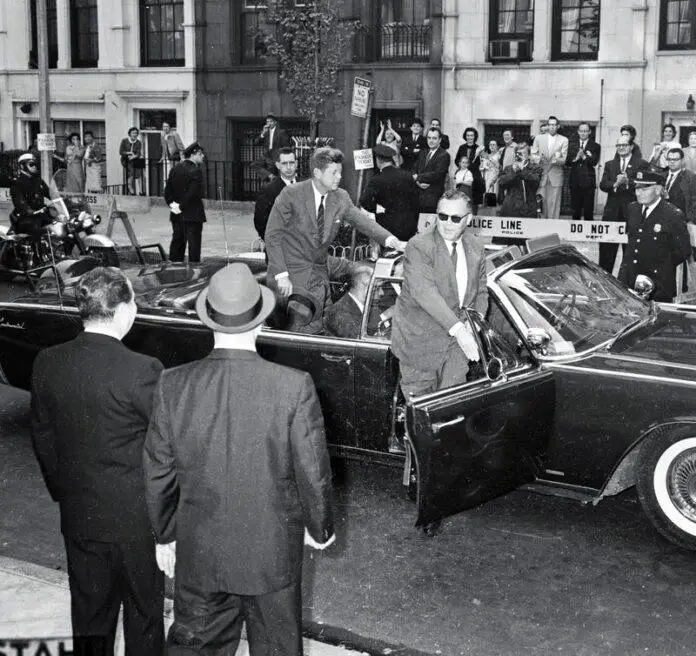A newly discovered home movie capturing President John F. Kennedy’s motorcade moments after his assassination is set for auction later this month, offering a rare glimpse into one of American history’s most tragic events.
The 8mm color film, shot by Dale Carpenter Sr. on Nov. 22, 1963, shows the presidential limousine racing down Interstate 35 toward Parkland Hospital in Dallas, Texas. Experts describe it as the most complete view of the chaotic aftermath of the shooting that claimed Kennedy’s life.
RR Auction in Boston will offer the footage during a live auction on Sept. 28. Online bidding has already begun, with the leading bid reaching $12,100 as of Wednesday evening.
“This is remarkable, in color, and you can feel the 80 mph,” said Bobby Livingston, executive vice president of RR Auction.
The film, which lasts approximately 10 seconds, begins with accessory vehicles in the president’s motorcade traveling down Lemmon Avenue toward downtown Dallas. It then cuts to moments after Kennedy was fatally shot, showing the motorcade speeding down I-35.
Notably, the footage captures Secret Service Agent Clint Hill standing over First Lady Jacqueline Kennedy in her iconic pink suit. Hill, now 92, famously leaped onto the back of the Kennedys’ limousine when gunfire erupted as the motorcade passed the Texas School Book Depository in Dealey Plaza.
“I did not know that there were not any more shots coming,” Hill said. “I had a vision that, yes, there probably were going to be more shots when I got up there as I did.”
Assassin Lee Harvey Oswald had positioned himself on the sixth floor of the Depository with a sniper rifle, firing a single, fatal shot at the president. After Kennedy was struck in the head, the motorcade turned onto I-35 and raced toward Parkland Memorial Hospital, where he would be pronounced dead about half an hour later.
James Gates, Carpenter’s grandson, discovered the film stored alongside family movies in a milk crate. He first projected it onto his bedroom wall in 2010, finding the I-35 footage particularly “shocking” — especially Hill’s precarious position on the limousine.
Before making the footage public, Gates reached out to Hill around the time his book, “Mrs. Kennedy and Me,” was published in 2012. Hill’s co-author and later wife, Lisa McCubbin Hill, commented on the impact of seeing the footage: “To see the footage of it actually happen … just kind of makes your heart stop.”
Farris Rookstool III, a historian, documentary filmmaker, and former FBI analyst who has reviewed the film, emphasized its unique perspective, saying, “It shows the rush to Parkland Hospital in a more complete way than other, more fragmented film footage” he’d seen. He expressed hope that after the auction, the footage will be made available for use by filmmakers and researchers.
The emergence of new footage related to the Kennedy assassination is not uncommon, according to Stephen Fagin, curator at The Sixth Floor Museum at Dealey Plaza in Dallas. “These images, these films and photographs, a lot of times they are still out there,” Fagin explained. “They are still being discovered or rediscovered in attics or garages.”
Fagin noted that many people recognized the historical significance of the assassination, leading them to preserve related materials. This tendency has resulted in the continuous surfacing of new artifacts over the decades.
The auction house has released some still photos from the film footage but has not made public any images showing the motorcade on the highway. As the auction date approaches, interest continues to grow among historians, researchers, and collectors eager to examine this newly unearthed piece of American history.

